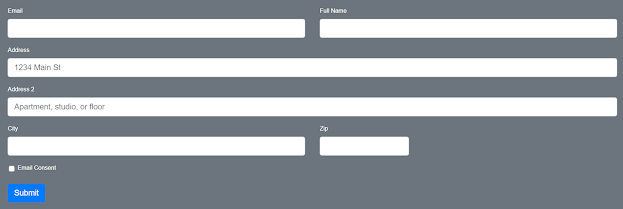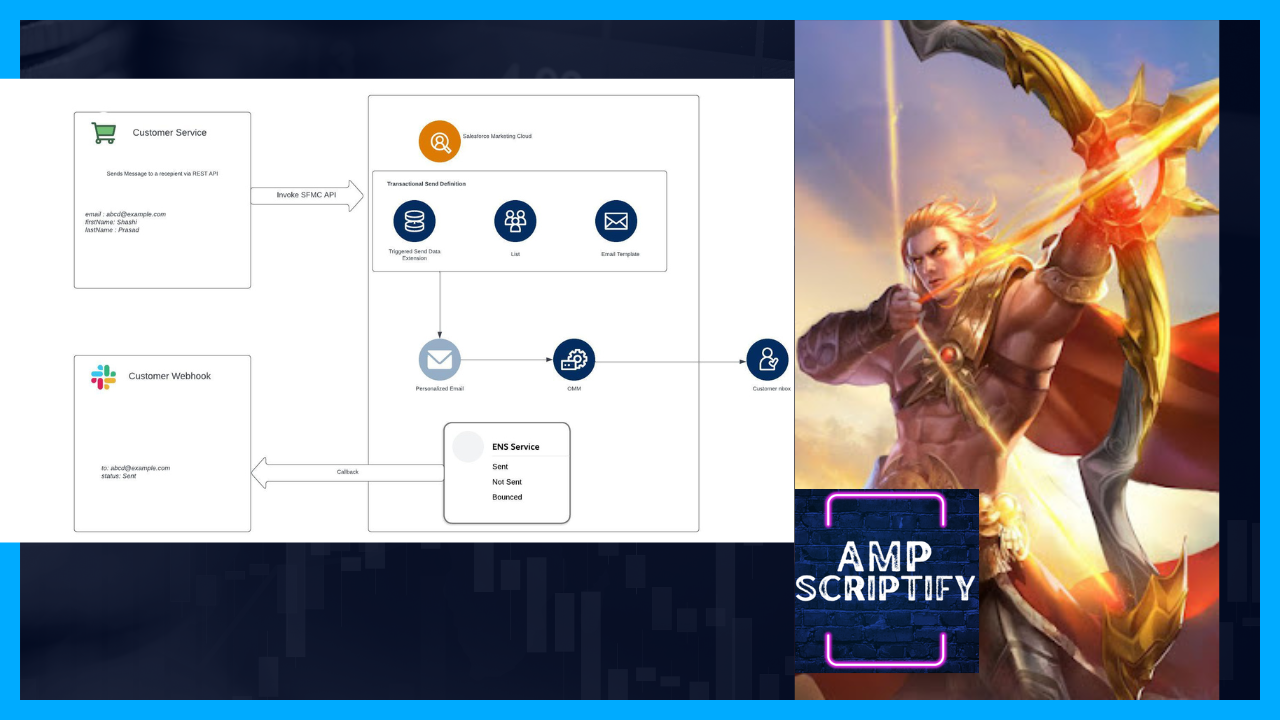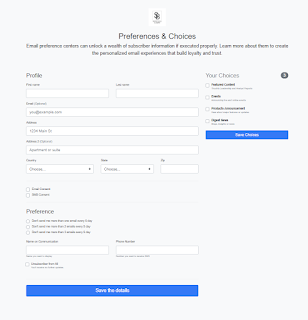Insights Unleashed: Data Views Empowering Marketing Cloud
Data views are a crucial component of modern marketing strategies, providing valuable insights and actionable intelligence for businesses operating in the digital realm. A data view is essentially a customized perspective into the vast pool of data accumulated by a marketing cloud platform.
With data views, marketers can unlock a wealth of information about their customers, campaigns, and overall marketing performance. These views enable businesses to segment their audience based on various attributes such as demographics, purchase history, engagement patterns, and more. By dissecting the data into meaningful subsets, marketers can tailor their messaging, offers, and experiences to specific customer segments, enhancing relevance and driving better outcomes.
Data views also facilitate comprehensive analysis and reporting. Marketers can gain deep visibility into the effectiveness of their campaigns, uncovering key performance indicators, conversion rates, and other relevant metrics. This allows for data-driven decision-making, optimizing marketing strategies, and allocating resources more efficiently.
Furthermore, data views foster a holistic view of the customer journey. By tracking and analyzing customer interactions across multiple touchpoints, marketers can gain a comprehensive understanding of their audience's behavior, preferences, and needs. This knowledge enables personalized and targeted marketing initiatives, resulting in higher customer satisfaction and increased brand loyalty.
Data views in marketing cloud platforms empower marketers to make informed decisions, adapt their strategies in real-time, and drive business growth. By harnessing the power of data, businesses can create more personalized experiences, improve customer engagement, and maximize the return on investment (ROI) for their marketing efforts.
Streamlining Data Views: Simplifying Data Extension Creation with SSJS
In this informative guide, we will walk you through the step-by-step process of creating data views and data extensions using SSJS (Server-Side JavaScript). We will delve into the intricacies of setting up data views, which provide a customized perspective into your marketing cloud platform's vast data pool.
You will learn how to create data extensions, allowing you to organize and structure your data effectively. We will cover the essential components of data extension creation, including defining fields, setting data types, and establishing relationships.
Additionally, we will explore the power of SQL queries in creating and manipulating data views. You will gain valuable insights into constructing SQL queries to extract specific data subsets, filter records, and perform advanced data transformations within your data views.
By following our comprehensive instructions and examples, you will be equipped with the knowledge and skills to create data views, data extensions, and utilize SQL queries effectively. Enhance your marketing cloud experience by harnessing the full potential of data views and leveraging SQL to derive actionable insights from your data.
Define Folder structure via SSJS
Our Folder structure would look like :

Full SSJS Code to build the folder structure with required data extensions :
<script runat="server">
Platform.Load("Core","1");
//=================================================================================//
// Reteireive Category Id from the folder based on Name and ContentType
// We are using complex filter because we might be
// using the same name across different assets
//=================================================================================//
function RetrieveCategortyIDForAFolder(name,contentType){
// Assign variables to a filter operations for left filter
var propName1="Name";
var simpleOperator1="equals";
var propValue1=name;
// Assign variables to a filter operations for right filter
var propName2="ContentType";
var simpleOperator2="equals";
var propValue2=contentType;
var filter1={
Property:propName1,SimpleOperator:simpleOperator1,Value:propValue1};
var filter2={
Property:propName2,SimpleOperator:simpleOperator2,Value:propValue2};
var complexFilter = {
LeftOperand: filter1,LogicalOperator: "AND",RightOperand: filter2};
var results = Folder.Retrieve(complexFilter);
return results[0].ID;
}
//=================================================================================//
// Create a sub-folder inside a parent folder based on category ID
// Assign a javascript variable with all prop required for creating the folder
//=================================================================================//
function CreateAfolder(name,customerkey,description,contentType,allowChildren,parentFolderCategoryID){
var newFolder = {
"Name" : name,
"CustomerKey" : customerkey,
"Description" : description,
"ContentType" : contentType,
"IsActive" : "true",
"IsEditable" : "true",
"AllowChildren" : allowChildren,
"ParentFolderID" : parentFolderCategoryID
};
var status = Folder.Add(newFolder);
return status;
}
//===============================================================================================================//
// Query this data view in Automation Studio to find the subscribers sent emails from your Marketing Cloud account.
// View subscribers who were sent emails from your account by querying the _Sent data view.
// Records dating back six months from the day the query runs are available.
// Dates and times are stored in Central Standard Time. Daylight Savings Time is not observed.
//===============================================================================================================//
function CreateSentDataViews(CategoryID)
{
var deObj = {
"CustomerKey" : "Dataview_Sent",
"Name" : "Dataview_Sent",
"CategoryID":CategoryID,
"Fields" : [
{ "Name" : "AccountID", "FieldType" : "Number" },
{ "Name" : "OYBAccountID", "FieldType" : "Number"},
{ "Name" : "JobID", "FieldType" : "Number" },
{ "Name" : "ListID", "FieldType" : "Number" },
{ "Name" : "BatchID", "FieldType" : "Number" },
{ "Name" : "SubscriberID", "FieldType" : "Number" },
{ "Name" : "SubscriberKey", "FieldType" : "Text", "MaxLength" : 254 },
{ "Name" : "EventDate", "FieldType" : "Date"},
{ "Name" : "Domain", "FieldType" : "Text","MaxLength" : 128},
{ "Name" : "TriggererSendDefinitionObjectID", "FieldType" : "Text","MaxLength" : 36},
{ "Name" : "TriggeredSendCustomerKey", "FieldType" : "Text","MaxLength" : 36}
]
};
var myDE = DataExtension.Add(deObj);
return myDE;
}
//===============================================================================================================//
// Query this data view in Automation Studio to find the subscribers open emails from your Marketing Cloud account.
// View email opens for your account by querying the _Open data view.
// Records dating back six months from the day the query runs are available.
// Dates and times are stored in Central Standard Time. Daylight Savings Time is not observed.
// To view time-related data in your time zone, set time zone user preferences.
//===============================================================================================================//
function CreateOpenDataViews(CategoryID)
{
var deObj = {
"CustomerKey" : "Dataview_Open",
"Name" : "Dataview_Open",
"CategoryID":CategoryID,
"Fields" : [
{ "Name" : "AccountID", "FieldType" : "Number" },
{ "Name" : "OYBAccountID", "FieldType" : "Number"},
{ "Name" : "JobID", "FieldType" : "Number" },
{ "Name" : "ListID", "FieldType" : "Number" },
{ "Name" : "BatchID", "FieldType" : "Number" },
{ "Name" : "SubscriberID", "FieldType" : "Number" },
{ "Name" : "SubscriberKey", "FieldType" : "Text", "MaxLength" : 254 },
{ "Name" : "EventDate", "FieldType" : "Date"},
{ "Name" : "Domain", "FieldType" : "Text","MaxLength" : 128},
{ "Name" : "TriggererSendDefinitionObjectID", "FieldType" : "Text","MaxLength" : 36},
{ "Name" : "TriggeredSendCustomerKey", "FieldType" : "Text","MaxLength" : 36},
{ "Name" : "IsUnique", "FieldType" : "Boolean"}
]
};
var myDE = DataExtension.Add(deObj);
return myDE;
}
//===============================================================================================================//
// Query this data view in Automation Studio to find the subscribers click emails from your Marketing Cloud account.
// VView clicks for links in emails sent from your account by querying the _Click data view
// Records dating back six months from the day the query runs are available.
// Dates and times are stored in Central Standard Time. Daylight Savings Time is not observed.
// To view time-related data in your time zone, set time zone user preferences.
//===============================================================================================================//
function CreateClickDataViews(CategoryID)
{
var deObj = {
"CustomerKey" : "Dataview_Click",
"Name" : "Dataview_Click",
"CategoryID":CategoryID,
"Fields" : [
{ "Name" : "AccountID", "FieldType" : "Number" },
{ "Name" : "OYBAccountID", "FieldType" : "Number"},
{ "Name" : "JobID", "FieldType" : "Number" },
{ "Name" : "ListID", "FieldType" : "Number" },
{ "Name" : "BatchID", "FieldType" : "Number" },
{ "Name" : "SubscriberID", "FieldType" : "Number" },
{ "Name" : "SubscriberKey", "FieldType" : "Text", "MaxLength" : 254 },
{ "Name" : "EventDate", "FieldType" : "Date"},
{ "Name" : "Domain", "FieldType" : "Text","MaxLength" : 128},
{ "Name" : "TriggererSendDefinitionObjectID", "FieldType" : "Text","MaxLength" : 36},
{ "Name" : "TriggeredSendCustomerKey", "FieldType" : "Text","MaxLength" : 36},
{ "Name" : "IsUnique", "FieldType" : "Boolean"},
{ "Name" : "URL", "FieldType" : "Text","MaxLength" : 900},
{ "Name" : "LinkName", "FieldType" : "Text","MaxLength" : 1024},
{ "Name" : "LinkContent", "FieldType" : "Text"}
]
};
var myDE = DataExtension.Add(deObj);
return myDE;
}
//===============================================================================================================//
// To view bounce data for emails from your Marketing Cloud account, query the _bounce data view in Automation Studio.
// View bounce data for emails from your account by querying the _bounce data view
// Records dating back six months from the day the query runs are available.
// Dates and times are stored in Central Standard Time. Daylight Savings Time is not observed.
// To view time-related data in your time zone, set time zone user preferences.
//===============================================================================================================//
function CreateBounceDataViews(CategoryID)
{
var deObj = {
"CustomerKey" : "Dataview_Bounce",
"Name" : "Dataview_Bounce",
"CategoryID":CategoryID,
"Fields" : [
{ "Name" : "AccountID", "FieldType" : "Number" },
{ "Name" : "OYBAccountID", "FieldType" : "Number"},
{ "Name" : "JobID", "FieldType" : "Number" },
{ "Name" : "ListID", "FieldType" : "Number" },
{ "Name" : "BatchID", "FieldType" : "Number" },
{ "Name" : "SubscriberID", "FieldType" : "Number" },
{ "Name" : "SubscriberKey", "FieldType" : "Text", "MaxLength" : 254 },
{ "Name" : "EventDate", "FieldType" : "Date"},
{ "Name" : "Domain", "FieldType" : "Text","MaxLength" : 128},
{ "Name" : "TriggererSendDefinitionObjectID", "FieldType" : "Text","MaxLength" : 36},
{ "Name" : "TriggeredSendCustomerKey", "FieldType" : "Text","MaxLength" : 36},
{ "Name" : "IsUnique", "FieldType" : "Boolean"},
{ "Name" : "BounceCategoryID", "FieldType" : "Number" },
{ "Name" : "BounceCategory", "FieldType" : "Text","MaxLength" : 50},
{ "Name" : "BounceSubcategoryID", "FieldType" : "Number" },
{ "Name" : "BounceSubcategory", "FieldType" : "Text","MaxLength" : 50},
{ "Name" : "BounceTypeID", "FieldType" : "Number" },
{ "Name" : "BounceType", "FieldType" : "Text","MaxLength" : 50},
{ "Name" : "SMTPBounceReason", "FieldType" : "Text"},
{ "Name" : "SMTPMessage", "FieldType" : "Text"},
{ "Name" : "SMTPCode", "FieldType" : "Number" },
{ "Name" : "IsFalseBounce", "FieldType" : "Boolean"}
]
};
var myDE = DataExtension.Add(deObj);
return myDE;
}
//=============================================================================================
// Create a query activity for sent data view
//=============================================================================================
function CreateSentDataViewQuery()
{
var queryDef = {
Name : "Sent Data View Query Definition",
CustomerKey : "sentdataviewQueryDefinition",
CategoryID : RetrieveCategortyIDForAFolder("DataViews_query","queryactivity"),
TargetUpdateType : "Overwrite",
TargetType : "DE",
Target : {
Name : "Dataview_Sent",
CustomerKey : "Dataview_Sent"
},
QueryText : "Select * from [_Sent]"
};
var status = QueryDefinition.Add(queryDef);
return status;
}
//=============================================================================================
// Create a query activity for open data view
//=============================================================================================
function CreateOpenDataViewQuery()
{
var queryDef = {
Name : "Open Data View Query Definition",
CustomerKey : "opendataviewQueryDefinition",
CategoryID : RetrieveCategortyIDForAFolder("DataViews_query","queryactivity"),
TargetUpdateType : "Overwrite",
TargetType : "DE",
Target : {
Name : "Dataview_Open",
CustomerKey : "Dataview_Open"
},
QueryText : "Select * from [_Open]"
};
var status = QueryDefinition.Add(queryDef);
return status;
}
//=============================================================================================
// Create a query activity for click data view
//=============================================================================================
function CreateClickDataViewQuery()
{
var queryDef = {
Name : "Click Data View Query Definition",
CustomerKey : "clickdataviewQueryDefinition",
CategoryID : RetrieveCategortyIDForAFolder("DataViews_query","queryactivity"),
TargetUpdateType : "Overwrite",
TargetType : "DE",
Target : {
Name : "Dataview_Click",
CustomerKey : "Dataview_Click"
},
QueryText : "Select * from [_Click]"
};
var status = QueryDefinition.Add(queryDef);
return status;
}
//=============================================================================================
// Create a query activity for bounce data view
//=============================================================================================
function CreateBounceDataViewQuery()
{
var queryDef = {
Name : "Bounce Data View Query Definition",
CustomerKey : "bouncedataviewQueryDefinition",
CategoryID : RetrieveCategortyIDForAFolder("DataViews_query","queryactivity"),
TargetUpdateType : "Overwrite",
TargetType : "DE",
Target : {
Name : "Dataview_Bounce",
CustomerKey : "Dataview_Bounce"
},
QueryText : "Select * from [_Bounce]"
};
var status = QueryDefinition.Add(queryDef);
return status;
}
try{
//====================================================================================================================//
// ******** Data Extension for Data views starts here ********
//====================================================================================================================//
// Parent Folder definiton
var parentFolderCategoryID= RetrieveCategortyIDForAFolder("Data Extensions","dataextension");
// Dataviews folder deinition
var status=CreateAfolder("DataViews","DataViews","DataViews folder","dataextension","true",parentFolderCategoryID);
var DataViewsCategoryID=RetrieveCategortyIDForAFolder("DataViews","dataextension");
// Create data view data extensions
var sentDataView=CreateSentDataViews(DataViewsCategoryID);
var openDataView=CreateOpenDataViews(DataViewsCategoryID);
var clickDataView=CreateClickDataViews(DataViewsCategoryID);
var bounceDataView=CreateBounceDataViews(DataViewsCategoryID);
//======================================================================================================================//
// ******** Data Extension for Data views ends here ********
//======================================================================================================================//
//====================================================================================================================//
// ******** Query Activity for Data views starts here ********
//====================================================================================================================//
// Parent Folder definiton
var parentFolderCategoryID= RetrieveCategortyIDForAFolder("Query","queryactivity");
// Dataviews query folder deinition
var status=CreateAfolder("DataViews_query","DataViews_query","DataViews_query folder","queryactivity","true",parentFolderCategoryID);
var DataViewsCategoryID=RetrieveCategortyIDForAFolder("DataViews_query","queryactivity");
var sentStatus=CreateSentDataViewQuery();
var openStatus=CreateOpenDataViewQuery();
var clickStatus=CreateClickDataViewQuery();
var bounceStatus=CreateBounceDataViewQuery();
//====================================================================================================================//
// ******** Query Activity for Data views ends here ********
//====================================================================================================================//
}
catch(ex){
Write(Stringify(ex));
}
</script>
Upon publishing the code, an automated process will initiate the creation of the necessary folder structure and data extensions. Additionally, a query definition will be generated and stored under the SQL Query folder within the activities tab of Automation. This seamless workflow ensures that all essential elements are set up correctly and readily available for efficient data management and analysis.







Comments
Post a Comment